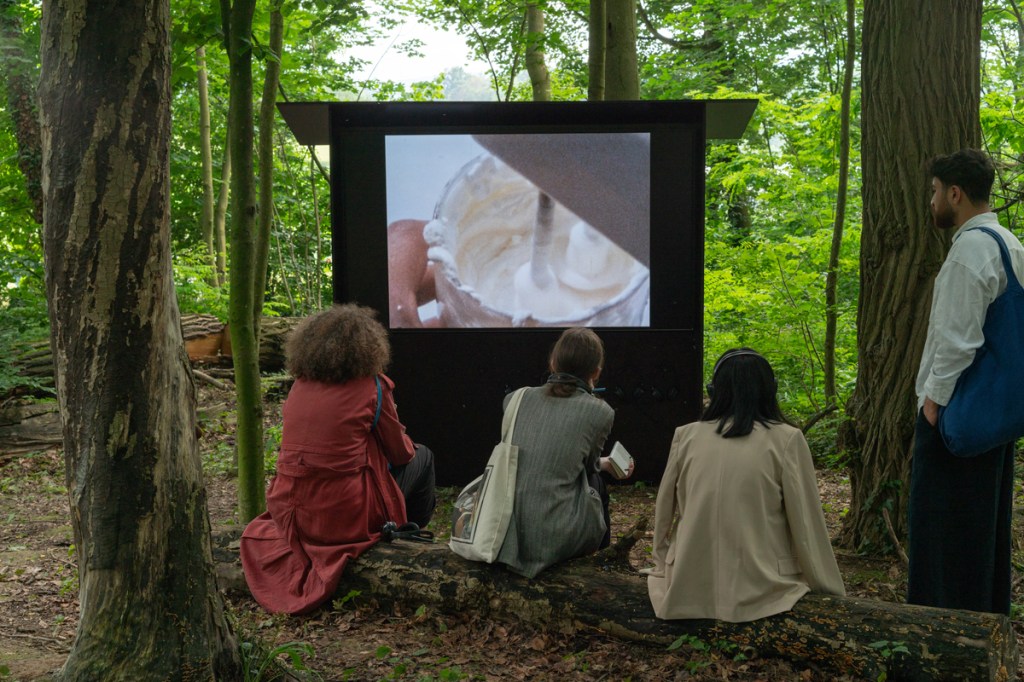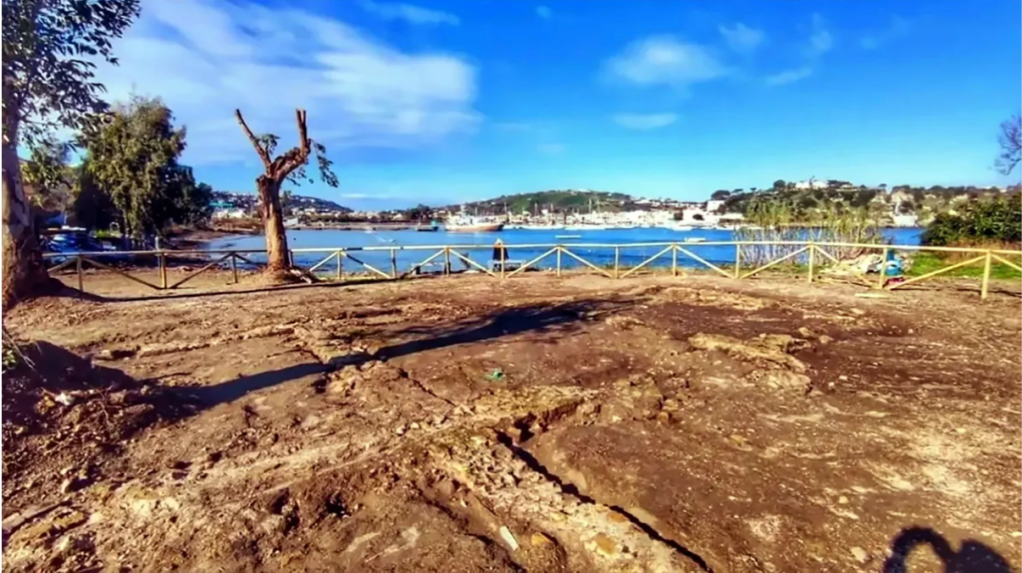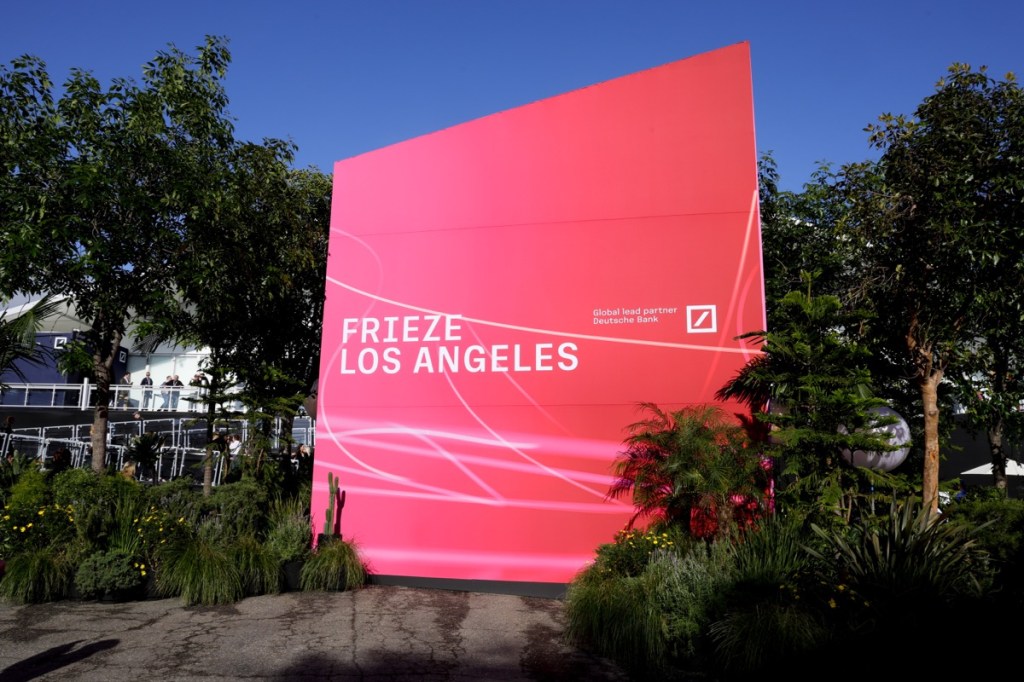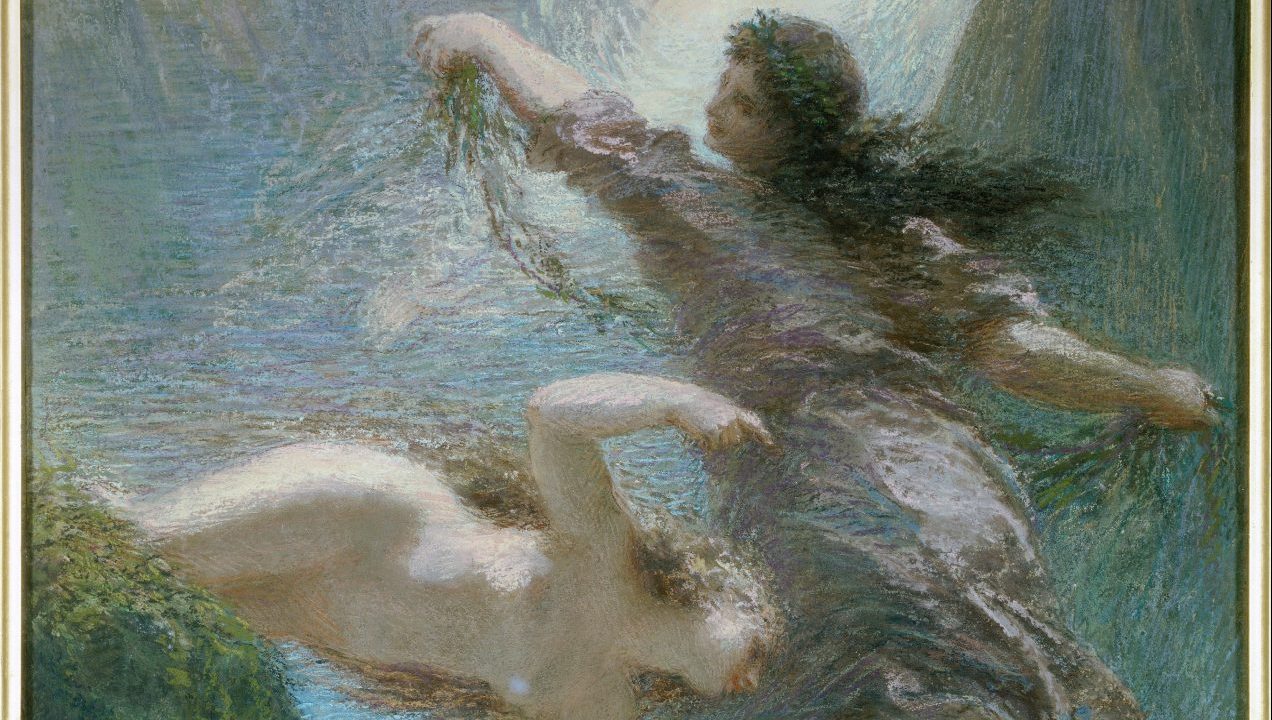Cows are among the attendees at the much-anticipated third edition of the itinerant Basel Social Club (BSC) this week. Rather than being in central Basel, the art fair–cum–social gathering is located on 50 acres of open farmland south of the city in Bruderholz. But the organizers of the selling exhibition, which runs opened Sunday and runs through June 16, hadn’t bargained on the local bovine population being such keen art lovers.
“They will go up to the artworks, and lick them, rub up against them. They are very curious,” said Roman Mathis, one of several farmer’s hosting the event. He said he had to work late into the nights leading up to opening day, repeatedly adjusting the fencing around the contemporary art installations, as weather conditions regularly shifted where and how works by over 150 artists, including performers, could be shown.
Following last-year’s widely acclaimed event in a former mayonnaise factory, BSC took a gamble this year in convening art and nature so literally in this outdoor venue, with works installed in fields, planted in forested nooks, or tucked inside barns, especially given Basel’s unpredictable weather. While severe storms have been averted thus far, the first day alone saw a mix of rain and shine, and by evening, as showers poured down on visitors, many were grumbling.
“The biggest challenge for us has been navigating with the changes in climate, and not knowing what fields we can use,” because of heavy rains, said Paris-based dealer Robbie Fitzpatrick, one of BSC’s co-founders. It has forced the team to play it by ear, and accept that “we don’t know, we’re flexible.”
In fact, two works that were to be displayed have been withdrawn due to rain, according to Fitzpatrick: Jean Tinguely’s tractor sculpture, Klamauk (1979), which can’t withstand “a drop of rain,” and another “high-value” work, Beni Bischof’s Made on Earth by Humans (2023), a souped-up DeLorean car (of Back to the Future fame).

Margaret Raspé, Regentrommeln (Raindrums), 1988/2023, installation view, at Basel Social Club 2024.
Photo Stefan Burger/Courtesy Galerie Molitor
But some artworks actually welcomed the inclement weather. The suspended circular drums in Margaret Raspé’s Regenrommein (Raindrums), 1988/2023, reverberate with sound them. It is one of the event’s poignant highlights. Since the 1960s, Raspé has addressed issues of climate and ecology through various mediums; a related film is also on view in the forest, along with videos by other artists.
Locating all the works on view is also part of the adventure for this year’s BSC, though daily tours are offered. An interactive map on the website informs visitors of where to wander. Though cell reception can be spotty, it’s a perfect excuse to get lost amid the undulating green fields and wildflowers.
As pieces were still being installed on opening day, part of the affair’s go-with-flow attitude, Fitzpatrick said, “People are asking me where the artworks are. The artworks are everywhere!”

Sarah Margnetti, this summer we can meet and dream, 2024, installation view, at Basel Social Club 2024.
Photo Lola Pertsowsky/Courtesy Margot Samel
It may not be an easy walk in the field, but it is an experience more than worth the journey that feels lightyears away from the commercial bustle of the Messeplatz, where Art Basel opens to VIPs on Tuesday morning. “This project is not an art fair, and it shouldn’t be confused with that, and the aim is really to present all of these different facets that comprise the ecosystem of our artistic community. The emphasis is really on the artists,” said Fitzpatrick.
Basel Social Club is technically a nonprofit event that is free to visit and includes participation from commercial galleries, artist-run projects, and foundations like the Pinault Collection and the Beyeler Foundation, who present a range of artistic practices and artists, from the very young to the historically established. Artists are given carte blanche, and commercial participants pay a flat fee of 2,500 Swiss Francs (around $2,788), while artist-run projects can participate for free. This year, the event has added a concert to its programming, headlined by Haddaway & Wolfram on Wednesday night.

Galerina’s Mischa Lustin opens his leather jacket to show off sculptures by Sarah Staton.
Devorah Lauter for ARTnews
Young dealer Mischa Lustin of London’s Galerina said BSC “is a better fit for us because we have friendly relationships with the people organizing,” adding that the event is “a little more fun and a little less cringy” than a typical art fair. He described Galerina as “practically non-commercial,” with a marked rock ’n’ roll edge. On cue, he opened his leather jacket to show several “smuggled” artworks by Sarah Staton pinned to the garment’s inner lining. Jewel-like, mini sculptures made of gold-plated bronze, they are priced between 100 to 900 Swiss Francs ($111–$1,003).
Other memorable highlights include Himalayan artist Aqui Tami’s ephemeral, vulva-shaped sculpture made out of the muddy earth and titled Shrine for Boju. She said the work “honors our grandmother, the divine feminine presence” and later performed a ritual of thanks with the piece.

David Medalla, Cloud Canyons, 1963/2016, installation view, at Basel Social Club 2024.
Photo Julie Becquart/Courtesy another vacant space and Mountains, Berlin
Cloud Canyons (1963/2016), the late artist David Medalla’s white, rain-proof sculpture of overflowing biodegradable soap columns was popular among the many visiting children who ran after the sudds as they blew away. Priced at about €250,000 ($268,000), the piece was brought by Berlin’s Mountains gallery. (The Hammer Museum in Los Angeles this week opens a major survey for Medalla, who died in 2020.)
On, Sunday, amid a sunny break in the clouds, Paulo Nazareth’s iconic performance Moinho de Vento/Windmill (2018) was re-enacted with 13 local immigrants come from Latin America, Africa, and the Middle East, kicking off BSC’s live programming. Dressed in white, the performers solemnly walked through the green fields while holding Dutch ceramic coffee grinders, which they silently ground, leaving a trail of beans behind. We were told the grounds are not harmful to the surrounding environment.



